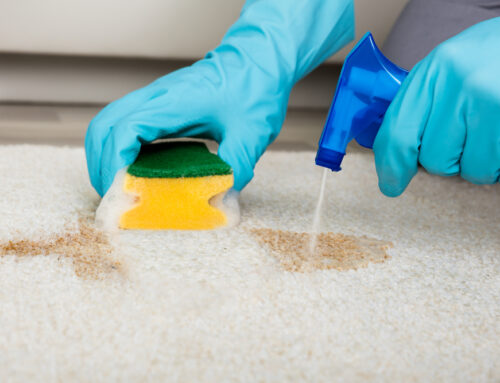How often do you clean your TV?
Most people don’t think twice about cleaning their TV, even if they use it every day. When performing routine cleaning, consider checking on your TV. Like other electronics, the static charge from our TVs can attract a lot of dust.
Dust can not only ruin the picture quality but also cause your TV to short circuit. However, when learning how to clean a TV screen, you may want to put down the bottle of Windex. There is a right and wrong way to clean your TV, and your usual cleaning techniques could damage the screen.
So, what’s the best way to clean your television screen? If you want some TV screen cleaning tips, you’ve come to the right place. Read on to find out more.
Step 1: Get a Soft and Dry Cloth
When cleaning your TV, it’s best to use microfiber cloths. Microfiber cloths are woven and consist of many tiny fibers, which are perfect for TV screens. Some TVs come packaged with their own cleaning cloths, so be sure to check your stock room.
This microfiber cloth is the same one used for camera lenses, phones, and even eyeglasses. It’s essential never to use tissues, rags, or paper towels to clean your television screen. These types of cloth can scratch the screen’s surface and permanently damage it.
You may also use an electrostatic duster if you have it.
When wiping your TV screen, make sure not to apply too much pressure. Most households nowadays have flat-screen televisions, which have pressure-sensitive screens. This applies to modern TVs like Plasma, LCD, OLED, and QLED TVs.
Pushing too hard can burn out your pixels and ruin the picture quality. Start by wiping with a dry cloth to remove the dust and debris on your screen. Make sure to clean all sides and pay attention to the TV corners.
Step 2: Use the Right Cleaner
When cleaning a TV screen, you’re bound to have stains or hardened dust that a simple dry wipe can’t remove. This is when to dampen your cloth with distilled water or a cleaning solution. Cleaning a TV screen is not like cleaning windows, so you want to avoid using harsh chemicals.
In some cases, using distilled water can be enough to remove stains. Dampen your microfiber cloth with a little water and wipe your TV screen. Wipe only in one stroke and in the same direction.
Remember that you must only dampen the cloth and never spray water directly on the screen. Applying water or any kind of cleaning solution on your screen could seep through the seal. This may damage the interior components, and you’ll end up with a bigger problem.
Make sure to overlap your strokes and make them as even as possible. When you’re done wiping your screen with a damp microfiber cloth, go over it again with a dry cloth. This will help prevent your TV from looking streaky and pick up any leftover residue.
If you think using distilled water isn’t cleaning enough, then use a cleaner.
Choosing the Right Cleaner
One of the tried and tested ways to clean TV is a cleaning mixture using mild dishwashing soap. Fill a container with equal parts distilled water and distilled dishwashing soap. When cleaning a TV screen, never use cleaning materials with acetone or ammonia.
It is also best to avoid any cleaning materials with ammonia, alcohol, and benzene. These materials can damage your TV’s anti-glare coat and discolor your screen. These can also be too abrasive for your sensitive TV screen, so it’s best to stick to mild dish soap.
Another cleaning solution you can use is vinegar in distilled water. In a container, mix one-part vinegar and one part distilled water.
If you do not like the smell of vinegar in your home, don’t worry. You can also use isopropyl alcohol. Mix one part of isopropyl alcohol with four parts of distilled water.
Don’t Buy Into Cleaning Kits
There are a lot of TV companies that sell TV Screen cleaners. But these are often overpriced and not needed. You can get the same results at home using mild dishwashing soap, so if you are looking to save money, skip these.
Step 3: Don’t Forget to Clean the Remote Control
If you’re already cleaning you’re TV, don’t forget to give your remote control some TLC. The remote control is one of the things that harbor most germs in your home. Before you clean your remote, make sure to remove its batteries to avoid rusting them.
Turn the remote control upside down and tap it against your palm. This will help you loosen any debris inside the buttons.
Getting between the buttons can be tricky, so you can use a cotton swab to get in the small crevices. If the grime is too hard for a cotton bud, you can use a toothpick or dry toothbrush. After removing the dust and gunk using these, you can use a wet microfiber cloth to clean your remote.
It also helps to clean other peripherals, like cable boxes, streaming players, or game consoles if you have them. Do you have speakers that don’t sound as crisp as the day you bought them? There might be dust clogging your speakers, which results in a fuzzy or dampened sound.
Vacuum the front of your speakers. If you can, take off the removable fabric covers and vacuum both sides. You may also use a lint roller to de-fuzz your speakers.
Learn How to Clean a TV Screen Today
With this TV screen cleaning guide, you now know how to clean a TV screen and have it look brand new. However, your TV may still have excess dust in its interior. Do you want your TV cleaned inside and out but don’t know how?
That’s where we come in. Contact Hubbard’s Maid Service today and get experienced cleaners to clean your TV. With Hubbard’s Maid Services, all your appliances can get squeaky clean inside and out.






